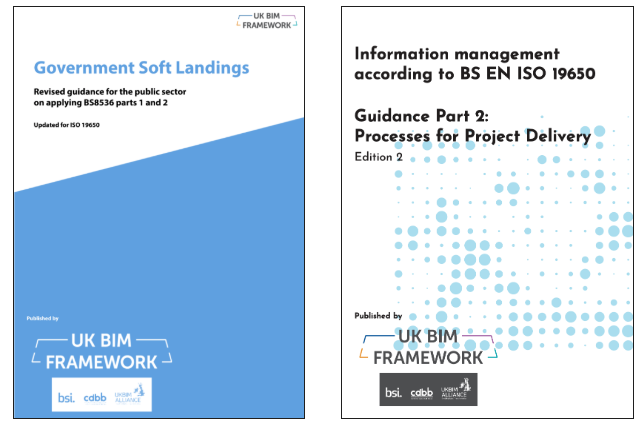
Submitted by Angela Walters on Wed, 06/11/2019 - 14:50
Guidance Part 2: Processes for Project Delivery (second edition) and Government Soft Landings, revised guidance for the public sector on applying BS8536 parts 1 & 2, published today by the UK BIM Framework
The UK BIM Framework today releases two documents to support practitioners in embedding and implementing Building Information Modelling (BIM):
- Guidance Part 2: Processes for Project Delivery (second edition)
- Government Soft Landings, revised guidance for the public sector on applying BS8536 parts 1 and 2
Both of these documents are available to download from the UK BIM Framework website https://ukbimframework.org/
The UK BIM Framework is the overarching approach to implementing BIM in UK developed by the UK BIM Alliance, BSI and CDBB. Together, these documents serve to support the UK BIM Framework’s mission to support industry understanding of BIM standards and their implementation. Collectively, BSI, CDBB and the UK BIM Alliance are developing and championing one single set of guidance in a clear and concise manner. By delivering a co-ordinated approach to creating and communicating and international wrapper for UK BIM we aim to ensure a smooth transition in the integration of the BS EN ISO 19650 series.
The second edition of Guidance Part 2: Processes for Project Delivery provides an update including a new section on the common data environment. It also provides additional insight on the activities associated with ISO 19650-2 clause 5 looking at:
- Assessment and need,
- Invitation to tender,
- Tender response,
- Appointment and Project close-out.
The remaining clause 5 activities will be addressed in the January 2020 third edition alongside insight associated with information requirements and other themes within the ISO 19650 series. Please note that this is evolving guidance and comments are welcome, please email info@ukbimframework.org
In addition to the updated Guidance Part 2, the UK BIM Framework is also releasing revised guidance for the public sector on applying BS8536 parts 1 & 2 – Government Soft Landings. Effective collaboration from the very outset of a project, and considering the end-user and the ongoing operation of the facility is vital to a successful built asset. Government Soft Landings (GSL) provides an activity overview and a mechanism to facilitate collaboration and ensure that the objectives throughout the design and build phase maintain alignment with the objectives for the building in operation. GSL is intended to help provide hospitals that promote improved healthcare provision, schools that improve teaching outcomes and offices that use less energy and are more effective workplaces. GSL is intended to support the public sector but will also provide benefit for the private sector in enabling a smooth transition from construction to operation.
Co-Editor of the revised Guidance Part 2, Sarah Davidson from the UK BIM Alliance said:
‘It has always been the intention that the Guidance documents would evolve. The first edition of Part 2: Process Guidance was intended to help industry navigate through the detail of the processes specified in the standard. This second edition introduces more detailed guidance and is the result of feedback to the initial document and continued collaboration with the community to provide the right information in the right format to enable adoption of the ISO 19650 standard.’
Government Soft Landings lead author Dave Philp, from the Centre for Digital Built Britain (CDBB) said:
‘Government Soft Landings is vital for public sector clients procuring design and construction works, but the approach is equally relevant to projects undertaken for the private sector. Applying the guidance supports maintenance of the ‘golden thread’ of a built asset’s purpose throughout its lifecycle’
